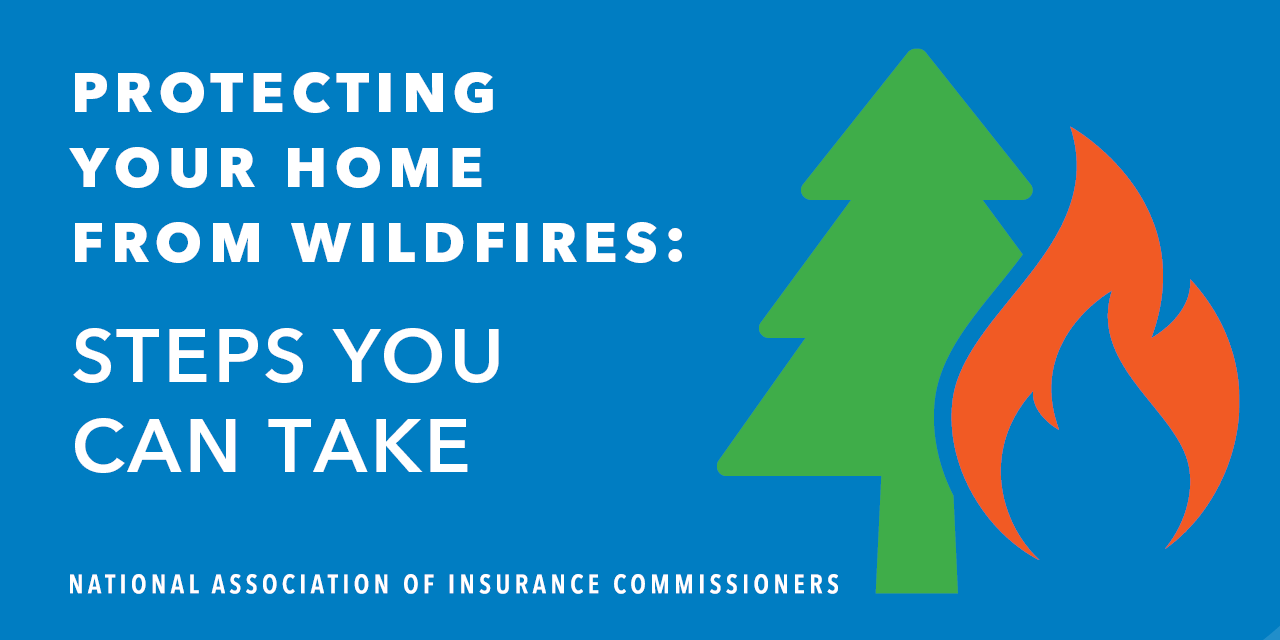
Protecting Your Home From Wildfires: Steps You Can Take
Whether caused by people or naturally occurring, wildfires can happen anywhere. They can spread quickly, traveling up to 14 mph. In their wake, wildfires cause erosion and loss of vegetation, which can lead to other problems, like flooding.
Homeowners can reduce their wildfire and flooding risks by retrofitting their homes, clearing debris from their properties, and creating defensible spaces.
What are the risks?
Flying embers can destroy homes. According to the Insurance Institute for Business & Home Safety (IBHS), during wildfires, approximately 90% of buildings damaged are first ignited by embers or other fires set by embers. Because of the danger of embers, homes that are situated in close proximity to each other when combustible features are present have an increased likelihood of catching fire.
What will my homeowners insurance policy cover?
Homeowners policies usually cover the repair or replacement of the built structure of your home and items damaged by flames, smoke, soot, and ash. However, you should check with your insurance agent to make sure your policy covers wildfires and whether there is a separate wildfire deductible.
Your insurance company may ask for an inventory of the items in your home at the time of the loss. Use the NAIC’s Home Inventory App as an easy way to prepare.
Homeowners insurance is not designed to cover damages to your car. A comprehensive car insurance policy may insure a car against fire damage. Check with your agent to find out what is covered under your policy.
How can I protect my home?
Create defensible spaces. Defensible space is the buffer you create between your home or a building and the grass, trees, shrubs, and any wildland area surrounding it. Create defensible space around trailers, recreational vehicles (RVs), and storage sheds, too. Maintaining a defensible space is essential to improving your home’s chance of withstanding a wildfire.
The IBHS recommends these steps to create a defensible space around your home:
- Install hard surfaces close to your home, such as a concrete walkway or rock mulch.
- Regularly water your lawn and plants to prevent dry vegetation.
- Remove dead plants and tree branches and trim low-hanging tree branches.
- Remove plants near combustible siding, foundation vents, windows, under-eave vents, or interior corners.
- Remove combustible materials within 5 feet of your home.
- Do not store combustible materials like wood and outdoor furniture under your deck.
- If you have a garage, install weatherstripping along the top and sides of the door opening.
Use noncombustible materials in your home and structures.
- Maintain 6-inch ground-to-siding clearance and consider noncombustible siding.
- Use Class A fire-rated roofing products.
- Use noncombustible fences and gates. Burning fencing can generate embers and cause direct flame contact with your home.
- Use 1/8-inch mesh to cover vents, and box in open eaves to create soffited eaves.
- Use multi-pane, tempered glass windows and close them when under threat of wildfire.
- Use deck boards that comply with requirements for new construction in wildfire-prone areas and remove combustibles from under your deck. Costs vary for retrofitting existing homes.
Clear debris. Clear debris from your roof and gutters regularly, as wind-blown embers can ignite debris.
- Gutter covers should be noncombustible.
- Remove shrubs under trees, prune branches that overhang your roof, and remove dead vegetation around your home.
For additional information, review Ready.gov’s wildfire preparation toolkit and DisasterSafety.org.
About the National Association of Insurance Commissioners
As part of our state-based system of insurance regulation in the United States, the National Association of Insurance Commissioners (NAIC) provides expertise, data, and analysis for insurance commissioners to effectively regulate the industry and protect consumers. The U.S. standard-setting organization is governed by the chief insurance regulators from the 50 states, the District of Columbia and five U.S. territories. Through the NAIC, state insurance regulators establish standards and best practices, conduct peer reviews, and coordinate regulatory oversight. NAIC staff supports these efforts and represents the collective views of state regulators domestically and internationally.
